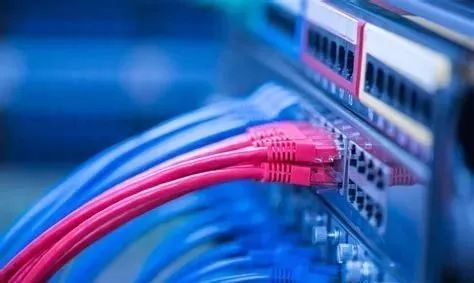What is a serial to ethernet device used for?
The main purpose of this tool is to provide communication between serial devices and computers through its COM port, which recognizes the signals sent by the serial port over Ethernet. In practice, this means that using RS232 to Ethernet devices, you can access any serial device located within an Ethernet (LAN) network from your computer, or manage remote COM port peripherals over the Internet using a Virtual Personal Network (VPN) or DNS.
The use of an Ethernet RS485 serial port server can be compared to one person completing the work of the entire enterprise. The device can be used in dispatch systems, commercial or technical automated metering systems, serial to IP communications, and many other areas.
How does Serial to Ethernet technology work?
First of all, when you purchase the RS232 serial port server and hardware, you will get the driver software that needs to be installed on the PC. This program is used to create virtual COM ports in your system when connecting hardware to your computer.
All virtual serial ports created with the help of device software appear as local ports in the computer’s Device Manager.
This way, any COM port embedded in serial-to-Ethernet hardware can appear to the remote computer as if it were its own physical port.
Now, whenever you connect a serial device to the RS232 serial server’s COM port, the peripheral device will be redirected to the computer’s virtual serial port and recognized by the PC as a local device.
Does Ethernet communicate serially or in parallel?

Traditional Ethernet is a serial communication medium.
If you go back to the early days of Ethernet, in the 1970s, technical engineers used an Ethernet cable for a specific network. This is RG-8 cable (similar to cable TV cable). Using so-called “thick” Ethernet cable, which has markers spaced approximately 2.5 meters apart, you can install a “transceiver” (small radio transceiver) at each marker. This can be done by cutting the cable, installing an N-type connector on the end of the cable, and then connecting the end of the cable directly to the transceiver, or more commonly using a “vampire tap”, drilling a small hole in the cable, and the transceiver A small strand of wire is clamped to the hole and the cable is inserted and touches the center conductor.
The transceiver is usually connected to the computer via the AUI cable, which is a 15-conductor cable that is connected to the AI port on the computer board. These AUI cables have a very unique connector that has a sliding clip that holds it in place. The evaluation board will generate signals that are sent over the AUI cable to the transceiver, where they are converted to RF energy and dumped into the cable. Along the cable, other transceivers will receive the radio signal, convert it back to an electrical signal, and transmit it to the board in the computer.
Later, a “thin” version of Ethernet was developed using standard RG-58 coaxial cable and the ubiquitous “T” connector, which would be used to connect the transceiver (usually directly on the computer’s board, but Occasionally via the AUI cable above) . “Terminators” are used at each end of the cable to attenuate the radio signal and prevent it from reflecting back and forth across the length of the cable, disrupting the network. Usually when you have a network problem like this it’s because someone disconnected the cable from the T-connector when they needed to move it around, rather than disconnecting the T-connector from the computer.
Eventually, twisted pair Ethernet came into use. These still use RF energy along the cable. Due to the nature of twisted pair signaling, it is possible to send different signals in both directions at the same time (called “full duplex”). With the advent of switches that isolate each connected site to its own dedicated physical network, and the switch having some data storage capabilities in its backplane, there is a certain amount of parallelism. Additionally, there are protocols that can send Ethernet-type signals over fiber optic cables, and some types of fiber optic cables can support multiple frequencies on the cable at the same time, allowing for further parallelization.
Keywords: Industrial Ethernet data transmission terminal